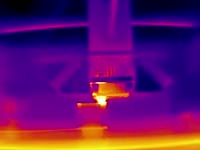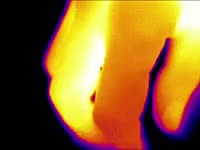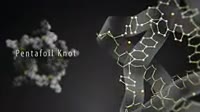DNA cleavage by restriction enzyme. Animation showing the mechanism by which a restriction enzyme (blue) cleaves DNA (deoxyribonucleic acid). Restriction enzymes, known as restriction endonucleases, cleave DNA strands at specific sequence locations. The letters represent the nucleotide bases: A (adenine), C (cytosine), G (guanine), and T (thymine). This example shows two cleavage regions in a DNA strand, at the sequence AATT. Bacteria have a variety of restriction endonucleases that cleave DNA at more than a hundred distinct recognition sites, each of which consists of a specific sequence of four to eight base pairs. After the cleavage, the resulting 'sticky ends' can be joined to create a hybrid DNA strands. These enzymes provide bacteria with a defence mechanism against invading viruses. Restriction enzymes are routinely used for DNA modification in laboratories.
Details
WebID:
C01841251
Clip Type:
RM
Super High Res Size:
1920X1080
Duration:
00:00:28.000
Format:
QuickTime
Bit Rate:
25 fps
Available:
download
Comp:
200X112 (0.00 M)
Model Release:
NO
Property Release
No













 Loading
Loading